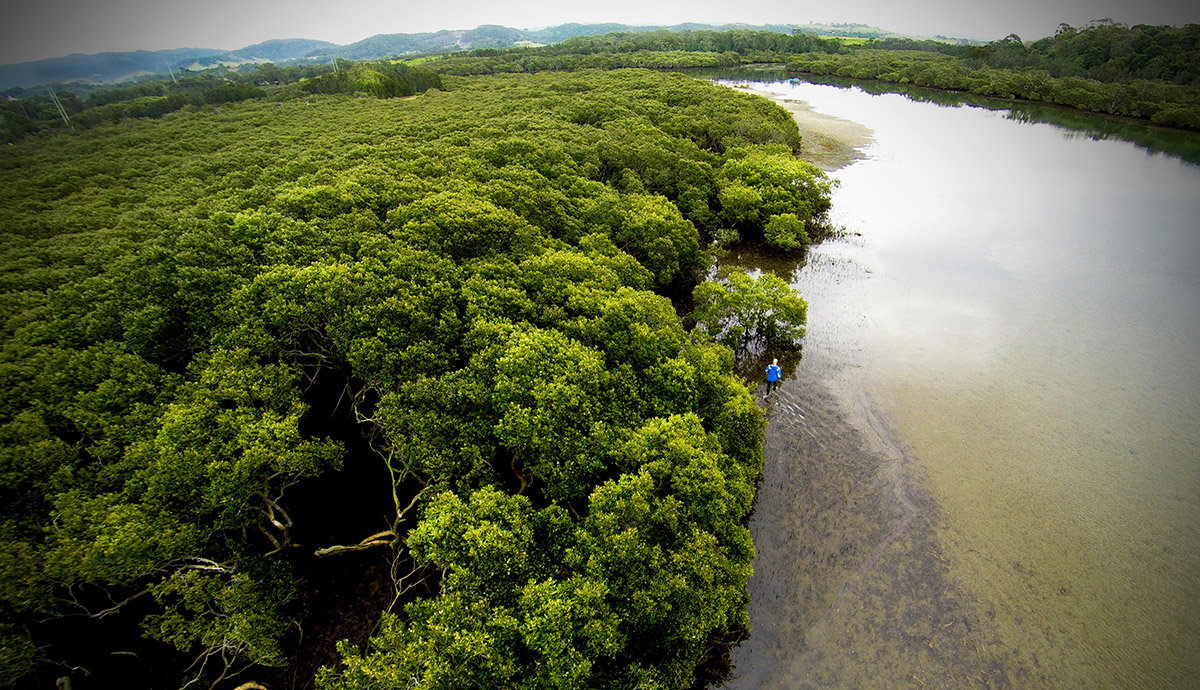October 15, 2015
Study finds mangroves could be under water by 2070
Many of the world’s mangrove forests may not survive sea-level rise, a study published in Nature has found.
About two-thirds of Indo-Pacific mangrove forests may not have sufficient sediment available to survive predicted sea-level rise, a new paper published in Nature suggests.
The study, involving researchers around the world, including Dr Kerrylee Rogers from UOW’s School of Earth and Environmental Sciences, suggests that management of the coast, and particularly of the river systems that deliver much of the sediment to the region, is essential for the survival of mangrove forests.
Sediment outflows from river systems are deposited in the tidal zone, creating the right conditions to support mangrove forests. These forests, in turn, are a vital breeding grounds and habitat for complex marine ecosystems.
The study found that 69 per cent of mangrove sites examined in the Indo-Pacific region did not have sufficient amounts of sediment to weather projected sea-level rise and those with low tidal range and low sediment supply could be submerged as early as 2070.
Dr Rogers, an ARC Future Fellow and expert in the response of coastal landscapes and ecosystems to climate change, said mangroves are in decline, particularly in burgeoning South East Asia, mainly due to increased human activity, including coastal development and marine pollution.
“Our study found that human activities, such as damming of rivers and floodgates, reduces sediment loads delivered to mangrove forests and limits their capacity to increase elevation at rates that would enable them to keep pace with sea-level rise in the 21st century.
“This decline is exacerbated by continuing reclamation throughout South East Asia for shrimp aquaculture and rice paddies.”
In Australia specifically, Dr Rogers and her team found that development of the coastal zone further limits the capacity of mangroves to move to higher elevations as the sea rises and roads, building and infrastructure act as a barrier to mangrove migration.
“Mangroves play an integral role in many coastal communities, providing an important habitat for fish and other species and helping protect the shorelines within estuaries from erosion and storms. They are also vital carbon sinks,” she said.
Intertidal mangrove forests occur on tropical and subtropical shorelines, and support fisheries, coastal protection and carbon sequestration, which are collectively and conservatively estimated to be worth US$194,000 per hectare per year.
Dr Rogers said in order to mitigate the damage to mangrove forests around the world, we need to halt climate change and limit the rate of sea-level rise.
“Removing barriers to sediment delivery or tidal flows to mangrove forests, including dams and flood gates, will also facilitate sedimentation. We also need to be more careful about planning in the coastal zone, with more consideration given to allowing mangroves to shift unimpeded to higher elevations.”
The Indo-Pacific region, which spans the Indian and Pacific Oceans, from the East Coast of Africa to South East Asia and Australia, holds most of the world’s mangrove forests.
Dr Rogers is also working on a UOW Global Challenges project that looks at mangrove regeneration in Vietnam’s Mekong Delta, Northern Australia, and Brazil, and the consequent social and economic benefits to the local regions.
The project, now in its second phase, is examining the extent of mangrove loss and the potential for carbon sequestration in the remaining mangrove forests.
“Mangrove forests are particularly efficient at capturing carbon from the atmosphere and storing it within biomass,” Dr Rogers, who is working with a multidisciplinary team of physical and social scientists, economists and lawyers on the project, said.
“This can be harnessed to limit further losses of mangrove forests by providing payment to local people to manage and protect them. The payment would come from carbon emitters wishing to offset their carbon footprint and would open up a whole new ‘blue carbon economy’ in these regions.”
